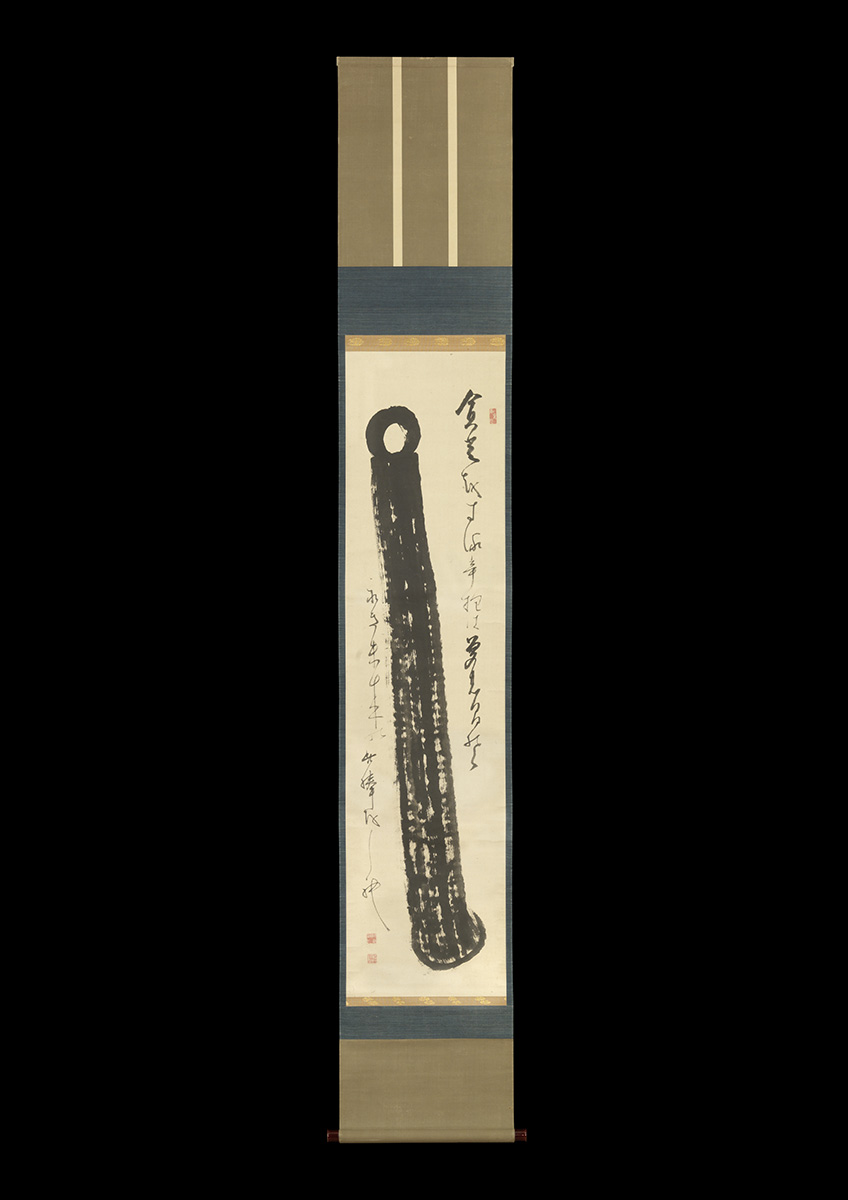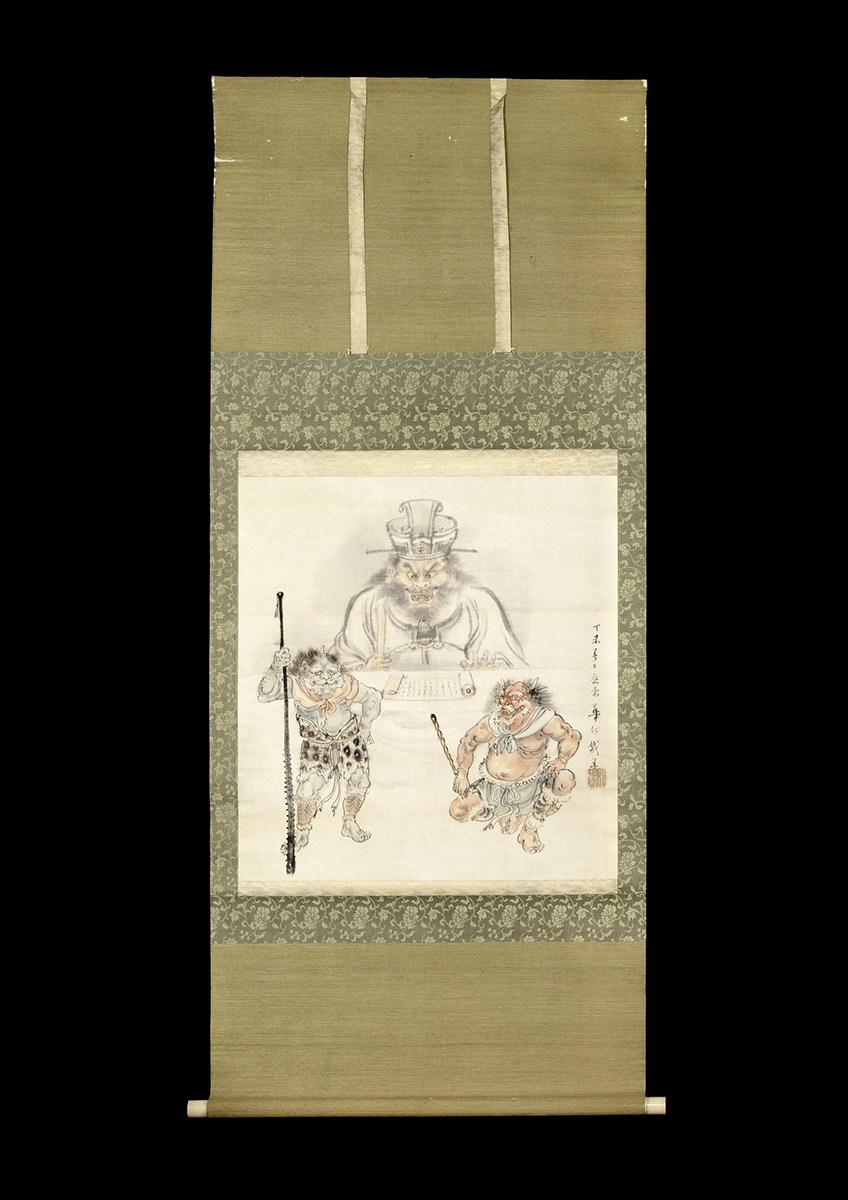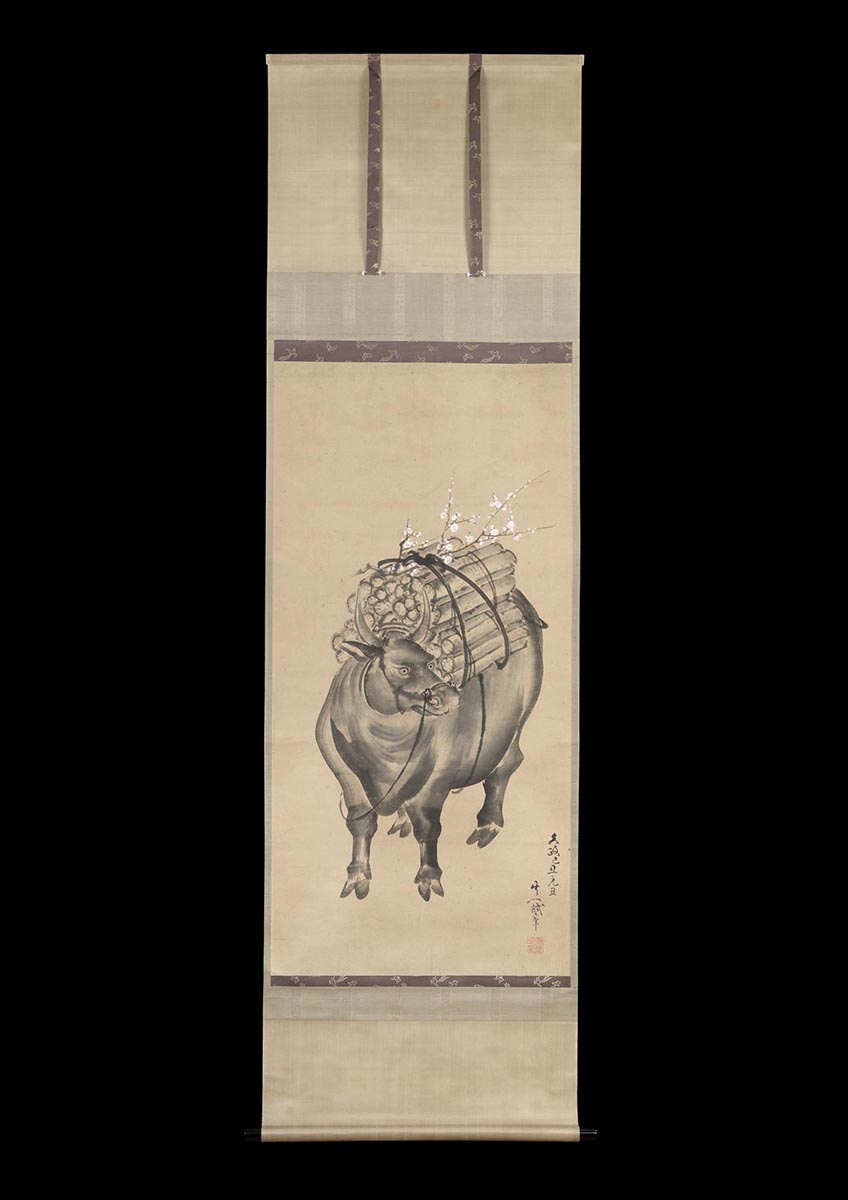Kanabō
Sada Kaiseki / Paintings
- Contact Us
-
Material
Scroll, ink on paper, silk mounting
-
Size
111.5 (h) x 27.5 cm (186.5 (h) x 30.2 cm)
-
Published
"Supranatural" by Galerie Mingei
Description
KANABŌ
Signed: Kanrei
Sada Kaiseki (1818-1882)
The kanabō (literally: "metal stick") was a spiked or studded two-handed war club used in feudal Japan by the samurai. It was also a mythical weapon, often used in tales by the oni (Japanese ogres) since they were reputedly extremely strong. A kanabō symbolizes the power of demons who come to punish the wicked in the various levels of hell. He who feels no fear of the kanabō, and is complacent in his righteousness, is most at risk for receiving this punishment.
The single stroke image is rendered with ink on paper with a blue cloth border extended with pale paper typical of the subdued atmosphere of Zen painting and features shunkei-nuri lacquered wood rollers.
Sada Kaiseki (Kanrei, 1818-1882) was a Shingon monk and a leading Buddhist figure of the early Meiji period. Operating during a central time for the formulation of fundamental modernization policies that would determine the future of Japan, Sada Kaiseki is a fascinating case of a Buddhist intellectual who did not hesitate to criticize the Meiji government and organize citizens’ movements to counter its policies.


